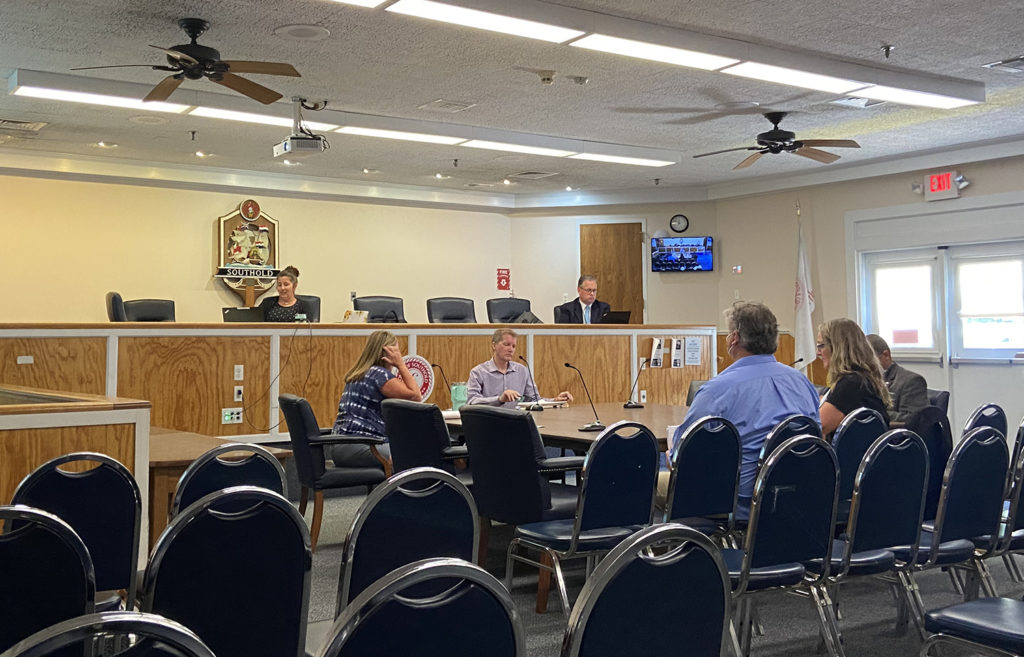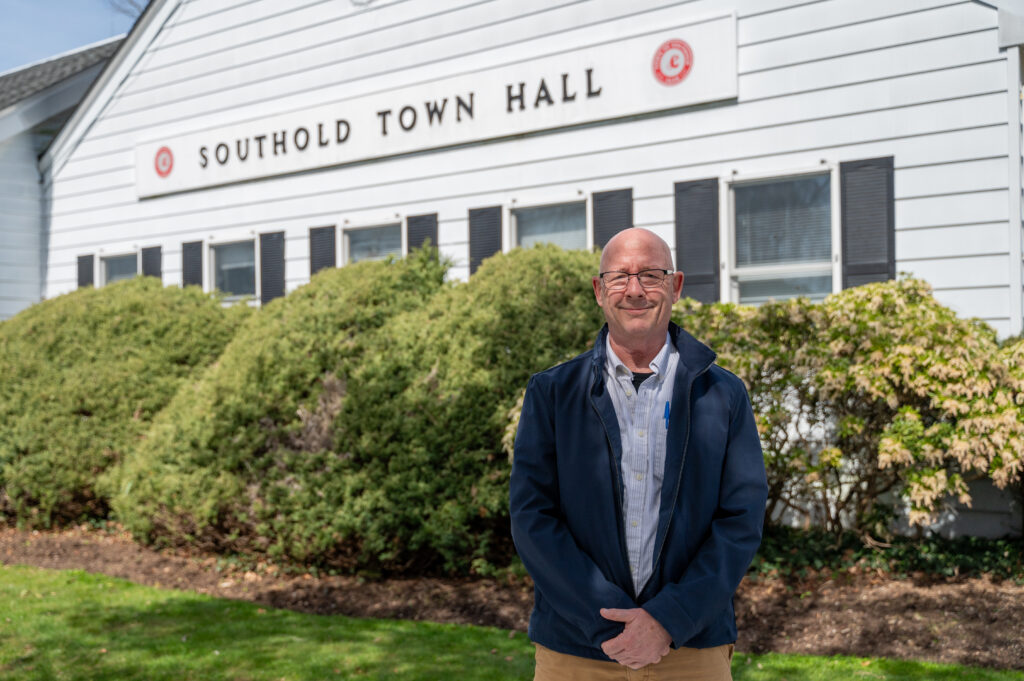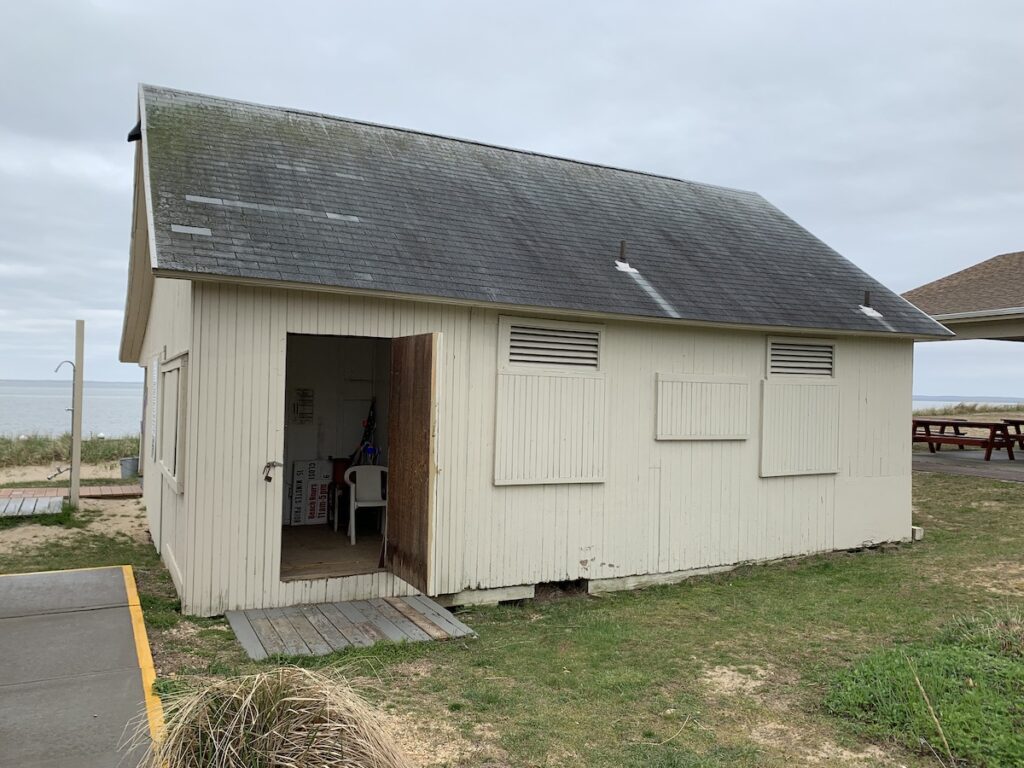Talks begin on housing solutions; tax referendum unlikely this year

The Town of Southold kicked off discussion of a housing solutions plan Tuesday with a meeting led by consultant Nelson Pope Voorhis.
The Peconic Bay Region Community Housing Act, signed in October 2021, allows the five East End towns to hold referendums on adding a half-percent to the existing 2% Community Preservation Fund tax on real estate transactions in those municipalities. Each town needs to present a plan for the funds, which must be used for housing solutions, before holding a referendum. After missing a June deadline, Southold is likely to postpone its referendum on the additional 0.5% tax.
“We’ve decided to complete a housing plan prior to offering the referendum so that, in our perspective, the public knows what they’ll be voting on,” Supervisor Scott Russell said Tuesday. He added that the town could put the referendum on the ballot and adopt the plan later, “which is something we might want to talk about as a board.”
Both Southampton and East Hampton towns have released draft plans ahead of the ballot, as reported by local outlets. Gerry Siller, supervisor of Shelter Island, has said a public hearing was held on a draft plan and the town is on track to vote on the proposition this November. Riverhead has not responded to requests for comment.
The consultant, NPV, plans to hold at least four public meetings, as it works with the Southold Town Board, Housing Advisory Commission and other municipal department representatives. NPV representatives said Tuesday that they aim to finalize a housing plan in November and indicated that the town needs to establish a community housing fund advisory board.
Kathy Eiseman of NVP said the housing plan would be adopted as part of the comprehensive plan, which “has some excellent recommendations regarding housing” that will help inform the agency as it moves forward. The housing plan will also include the Village of Greenport, she said.
“A housing plan will provide an overview of the [PBRCH] Act, it will quantify the need for affordable housing now and in the future and provide a standard mechanism to do this in the future, to actually continue to calculate that need in the future,” she said. “It will identify how affordable housing needs … will be addressed throughout the town. It will analyze and provide implementation strategies for at least some of the goals and objectives of ‘Chapter 8: Housing’ of the Comprehensive Plan … and it will also provide a menu of options on how the funds will be used.”
She pointed out that the housing crisis, which has been an issue in Southold for decades, has only been exacerbated during the pandemic. The plan needs to “adhere to several smart growth principles,” which are considered in the town comprehensive plan and affordable housing code. “There’s a lot of flexibility in how the funds can be used,” she added.
NPV noted in its initial bid that some of the challenges Southold faces in resolving the affordable housing crisis include water supply constraints, lack of wastewater treatment infrastructure and cost pressures from second home and seasonal rental markets.

Median income in Southold is a little over $87,000, according to NPV representative Taylor Garner, which means an affordable house in the town would be around $217,000. Right now, the median home price in Southold is a little over $600,000, “indicating a pretty big gap between the two.” As of July 11, only seven Southold homes listed on Zillow cost less than $650,000, according to NPV.
Most homes in Southold currently on the market cost over a million dollars, Ms. Garner added. Most local rental listings identified by NPV cost more than $3,000 per month, with 86 costing around $10,000 per month seasonally.
The high percentage of seasonal housing and increased demand for houses on the North Fork since the outbreak of the pandemic has contributed to the housing shortage, she noted.
The public engagement phase will include an open house with “stations” for people to provide feedback, with an online option and corresponding survey, Ms. Eiseman said.
As far as the referendum goes, “if the plan is far along and the public feels that they see how this money would be spent and see that there is a benefit to getting the referendum passed hopefully earlier and starting to collect these funds,” the town needs to notify the referendum by early August, she said.
“I think the reality is, if we’re going to have a referendum, we’re going to have a referendum with an understanding that we’re not going to have a complete plan,” Mr. Russell said. “ But to be able to dovetail this with a referendum would seem just untenable at this point.”
Town Board member Louisa Evans suggested including a representative from Fishers Island in discussions on the housing plan. She pointed out the island community has some needs that differ from those of the rest of the town.
Town Board member Greg Doroski suggested reaching out to local stakeholders as well, such as business owners and farmers, an idea the board seemed to agree with.
“Southold is very much about preservation of space and keeping rural character so how do we go ahead, because we all know we have this need for affordable housing, but how do we do that without losing the character of the town?” Ms. Evans asked. She added that potential rents for affordable units based on the local area median income are still out of reach for many workers in the town.
Ms. Eiseman responded that the comprehensive plan has been clear about directing affordable housing towards HALO zones and hamlet centers.
“I think that the question for the public, when we go out to the public, isn’t are you in favor of affordable housing? It’s more about the types, the density, the locations, how it looks. The way you phrase the questions is really important,” she said.
The board and NPV consultants suggested there are ways to facilitate affordable housing without adding new developments, such as rehabilitating existing structures or working with Habitat for Humanity. Board members also suggested finding ways to focus on facilitating home ownership and discussed whether the housing funds could be limited to use for locals only.








